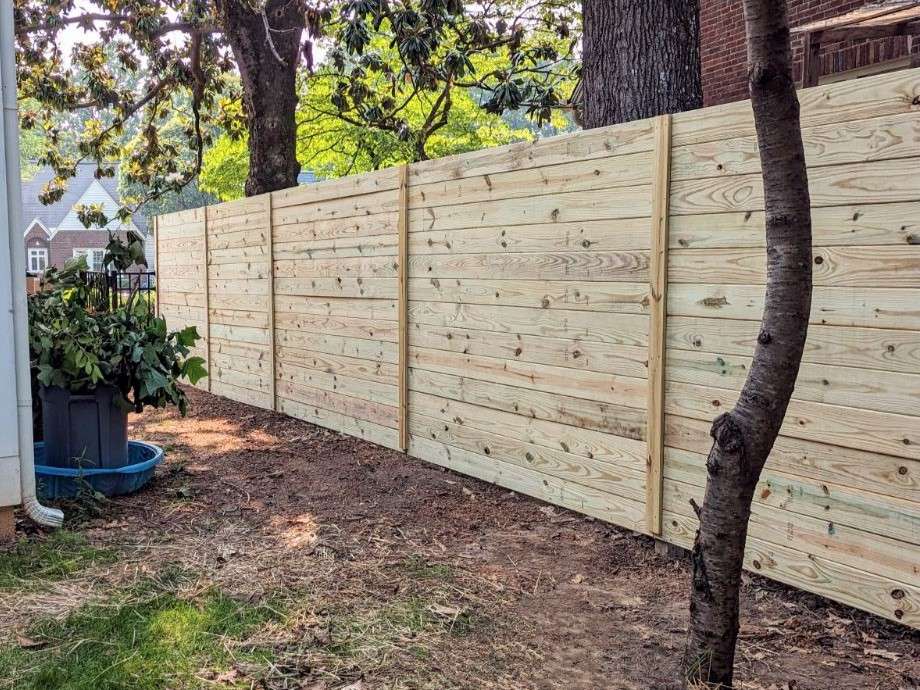All Categories
Featured

When considering setting up a fencing on your property, one of the most essential actions is to comprehend whether you need a license. The details permits called for can differ depending on your location, the kind of fencing you prepare to set up, and the elevation or placement of the fencing.
Why You Required an Authorization for a Fence Installment. A fence permit is required to guarantee that the installment meets neighborhood regulations. The permit procedure aids regional authorities confirm that your fencing does not conflict with website traffic visibility, regard your residential property lines, or go against elevation restrictions. It also ensures the security of the framework, so it doesn't position a threat to you, your next-door neighbors, or the general public. Setting up a fence without a license can cause penalties, elimination of the fence, or hold-ups in construction, so it's necessary to check whether a license is called for prior to beginning your task.
Types of Permits You May Need. There are a couple of usual types of authorizations you might require for a fence setup:
Structure License. A structure license is one of the most usual permit required for fencing setups. This permit ensures that the fencing meets safety and security standards and is created according to neighborhood building codes. A structure license is usually needed if the fencing exceeds a specific elevation (usually 6 feet), is made of specific products, or is located near a public pathway or road.
Zoning License. A zoning authorization may be called for to validate that your fence follows local zoning laws. Zoning guidelines can determine where a fence can be positioned on your home, just how high it can be, and whether it is admitted certain locations (such as along residential or commercial property lines or in front backyards) Some districts have laws limiting the elevation of fencings in the front backyard to ensure visibility for vehicle drivers and pedestrians.

Trouble License. You might need a setback authorization if you are developing a fencing near your property line or close to a street. A problem describes the range a structure, consisting of fences, have to be from the residential or commercial property line. Obstacle policies vary by area, and making certain that your fencing is positioned appropriately can avoid disputes with next-door neighbors and avoid offenses.
Property Owner Association (HOA) Authorization. You may need approval from them in enhancement to regional authorizations if you live in a neighborhood governed by a Home owner's Organization (HOA) HOA rules often cover the sort of products, elevation, style, and color of fencings. Also if your local government doesn't need an authorization, your HOA might still have details standards that require to be adhered to.
How to Make An Application For a Fence Permit. To look for a fence permit, you'll require to contact your neighborhood building department or planning workplace. The application procedure commonly includes submitting a type, paying a fee, and sending a website plan of your residential or commercial property that shows the proposed area of the fencing. You might additionally require to include details about the materials, height, and style of the fencing.
In many cases, a regional authorities might require to evaluate your residential or commercial property prior to authorizing the license. As soon as the authorization is provided, you will certainly be accredited to wage your fence installation.
When Is a License Not Required? In specific circumstances, a license might not be needed. These circumstances can consist of:
Low Height Fences: In many locations, fencings that are listed below a certain elevation (usually 3 to 4 feet) may not need a license, particularly if they are positioned in the yard or other non-visible areas.
Fence Replacement: If you're changing an existing fence with the very same elevation and product, some locations may not require a new authorization.
Non-Obtrusive Fences: Ornamental or temporary fencings, such as those utilized for horticulture or landscape design objectives, might not require licenses as long as they are reduced and not permanent.
However, it is necessary to get in touch with your neighborhood zoning workplace or building division, as guidelines can vary by jurisdiction.
Effects of Not Obtaining a License. Falling short to acquire the needed permits can cause significant effects. These consist of fines, compelled removal of the fence, or perhaps hold-ups in building. In addition, if your fence doesn't satisfy local laws, you might encounter lawful concerns with next-door neighbors or regional authorities.

Final thought. By guaranteeing that you adhere to local policies and obtain the necessary licenses, you can ensure and stay clear of expensive errors that your fencing is lawfully compliant. Examine with your local structure department, HOA, and zoning workplace to establish what permits are needed for your certain fencing task.
Latest Posts
A Taste of Activity at The Boogaloo Sports Bar & Grill
Published Apr 21, 25
1 min read
Keep Your Carpeting Looking Its Ideal with Easy, Expert Treatment
Published Apr 20, 25
1 min read
Appreciate Bayside Beauty at Deauville Inn's Sundown Deck
Published Apr 20, 25
1 min read